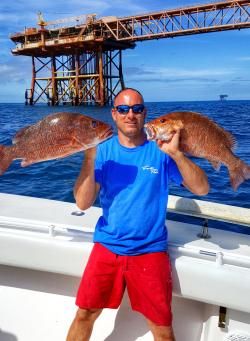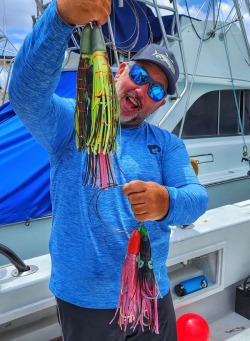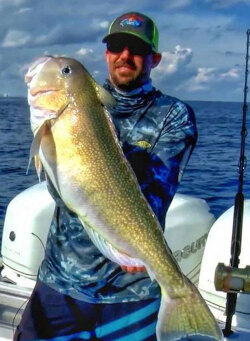David Brackmann, a skilled marlin fishing instructor, shares his expertise in setting up a marlin spread for targeting blue marlin. He demonstrates various lure types, deployment, optimal position, and managing the spread throughout the day. David also discusses dacron tag lines and cool up ratios for marlin lure swimming. The detailed presentation covers leader, connections, lure dynamics, hook sets, and rigging tips, empowering fishermen to fish smarter and more effectively.
Blue Marlin - Lures and Spread Setup with David Brackmann
(00:58:59)
Watch Full Video
View Short Trailer
Instructor:
David Brackmann
Description
/
Review
/
Instructor
Summary
- Subject: David Brackmann's Approach to Marlin Fishing
- Key Principle: Simple application of physics - action, reaction, force.
- Starting Point: Using the first lure to regulate speed and form the basis of the pattern.
- Lure Positioning: Wave position and placement in the prop wash.
- Spread Setup: Use of tag lines attached via a dacron loop.
- Swimming Cycle: Impact of lure's cycle on the hook-up ratio.
- Lure Details: Positioning based on size, head shape design, and the use of lures vs teasers.
- Equipment: Insights on leader, connections, lure dynamics, hook designs, and rigging.
- Final Thought: Continual learning and experimentation to improve hook-up ratio.
David Brackmann is a name that resonates with respect and admiration among the global fishing community. His extensive experience and success in fishing across the world, particularly in marlin fishing, has earned him a reputation as one of the best in the field. This video provides a comprehensive breakdown of Brackmann's methodical approach to setting up a spread of trolling lures for targeting blue marlin.
Login
to leave a review.
User Reviews
william ashworth
04.21.2022
0
David Brackmann
David Brackmann, a renowned big game fisherman, is a master in marlin fishing, particularly targeting yellowfins and dolphins. He uses a methodical approach, trolling a normal pattern of spreader bars and cedar plugs over dolphins, and adapting the WWB technique if necessary. Brackmann's expertise in marlin fishing is evident in his comprehensive analysis of offshore trolling lures, rigging, and fine-tuning.
Read moreVideos
We Recommend
0




